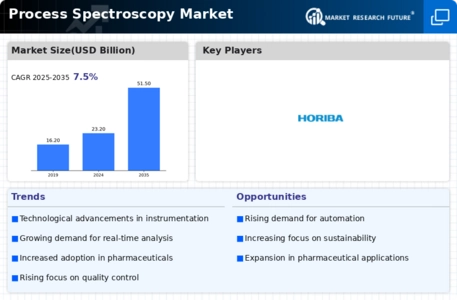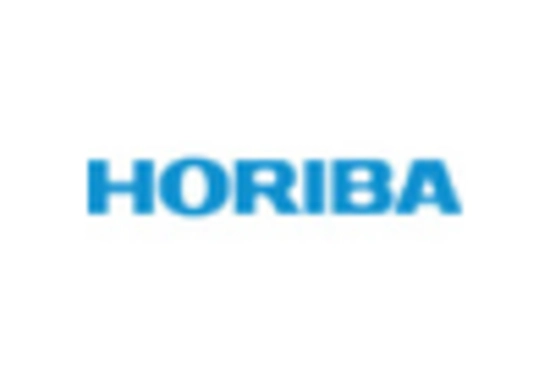Market Share
Process Spectroscopy Market Share Analysis
In the highly competitive arena of the Process Spectroscopy Market, effective market share positioning strategies are crucial for companies aiming to carve out a niche and thrive in this dynamic landscape. One key strategy employed by market players is differentiation through technological innovation. Companies invest heavily in research and development to enhance the capabilities of their process spectroscopy solutions, introducing features that set them apart from competitors. This differentiation not only attracts new customers seeking advanced functionalities but also helps in retaining existing clients by offering superior performance.
Another pivotal strategy revolves around strategic partnerships and collaborations. Many companies in the Process Spectroscopy Market opt for alliances with complementary technology providers or industry players. Such partnerships enable the creation of integrated solutions that address the diverse needs of customers. For instance, collaborations between spectroscopy solution providers and data analytics firms result in comprehensive offerings that provide not only real-time monitoring but also sophisticated data analysis capabilities. By aligning with strategic partners, companies can broaden their product portfolios and strengthen their market position.
Furthermore, a focus on customer-centric strategies plays a significant role in market share positioning. Understanding the unique requirements of different industries and tailoring spectroscopy solutions to meet those needs is a key aspect. Offering customizable solutions that can seamlessly integrate into existing processes provides a competitive edge. Additionally, companies that excel in customer support, training, and after-sales services enhance their reputation and foster long-term relationships, leading to customer loyalty and positive word-of-mouth in the market.
Market players also leverage pricing strategies to influence their market share positioning. Some companies opt for a cost leadership approach, offering competitive pricing to appeal to price-sensitive customers. Others focus on premium pricing, emphasizing the superior features and benefits of their advanced spectroscopy solutions. Striking the right balance between pricing and perceived value is crucial for success in the market. This involves a nuanced understanding of customer preferences, industry trends, and the competitive landscape.
Geographical expansion is another strategy employed by companies aiming to bolster their market share. Identifying and entering untapped markets, especially in emerging economies, allows companies to tap into new customer bases and diversify their revenue streams. Adapting solutions to meet the specific needs of different regions is essential for successful expansion. Companies need to navigate regulatory environments, cultural nuances, and local preferences to effectively establish their presence and gain a competitive advantage in diverse markets.
Moreover, continuous efforts in marketing and brand building contribute significantly to market share positioning. Establishing a strong brand presence through targeted marketing campaigns, participation in industry events, and thought leadership initiatives enhances a company's visibility and credibility in the market. A positive brand image not only attracts new customers but also instills confidence in existing ones.
















Leave a Comment